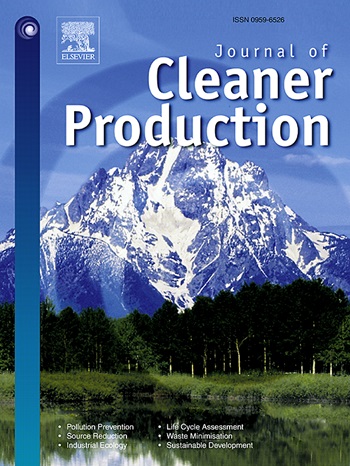Reducing water footprint of indirect evaporative air-cooling systems through integration of passive and active water recovery techniques
IF 10
1区 环境科学与生态学
Q1 ENGINEERING, ENVIRONMENTAL
引用次数: 0
Abstract
In the future, a large number of individuals are expected to take advantage of metropolitan life. The requirement for thermal comfort in highly urbanized areas, particularly in countries that are emerging, is projected to increase significantly. To fulfill the thermal comfort demands, the Maisotsenko cycle-based indirect evaporative air-cooling system is the prominent choice due to the improved performance of the system compared to conventional air-cooling techniques. However, fresh water is used as a cooling media in an indirect evaporative air-cooling system, presenting a major challenge to the implementation of this cooling technique in water-deficient regions. The current study investigates the performance of the indirect evaporative air-cooling system in terms of water recovery from exhausted working air or reducing the water footprints by using the two different configurations such as passive and active water reclamation techniques, utilizing the highly-effective hydrophobic sheets and dehumidifier (Peltier module). The results indicate that the dew-point and wet-bulb effectiveness of the indirect evaporative air-cooling system are 0.80 and 1.06, respectively. Moreover, the integrated indirect evaporative air-cooling system with water recovery techniques, reduces water consumption with the average recovery achieved 208.1 kg/year to 421.5 kg/year under the actual climate conditions. In addition, the amount of water recovered results in ultimate values of the energy efficiency ratio and specific reduction in water footprints, which range from 31.57 to 73.02 and 2.84–6.14 kg/h.ton, respectively. Furthermore, a cost-benefit analysis revealed that the levelized costs of energy for the passive and active water recovery systems are 7.4 × 10−5 and 3.8 × 10−5 USD/kWh, respectively. These values are significantly lower than the levelized cost of energy of the indirect evaporative air-cooling system without water recovery, which ranges from 2.4 × 10−2 to 5.8 × 10−2 USD/kWh, indicating a substantial improvement in energy efficiency. Besides, the operating CO2 emissions of passive and active water reclamation techniques are 162.35 kg CO2e/year, and 184.86 kg CO2e/year, respectively. The findings demonstrate that the proposed techniques are viable, highlighting their significant potential in terms of reducing the water footprint of the system. Therefore, the developed strategies can be implemented in real-world applications for promoting the long-term sustainability.
通过被动和主动水回收技术的集成,减少间接蒸发式空气冷却系统的水足迹
在未来,预计将有大量的个人享受都市生活。在高度城市化地区,特别是新兴国家,对热舒适的需求预计将显著增加。为了满足热舒适的需求,Maisotsenko循环为基础的间接蒸发风冷系统是突出的选择,因为与传统的风冷技术相比,该系统的性能得到了改善。然而,在间接蒸发空气冷却系统中,淡水被用作冷却介质,这对在缺水地区实施这种冷却技术提出了重大挑战。目前的研究调查了间接蒸发式空气冷却系统的性能,通过使用两种不同的配置,如被动和主动水回收技术,利用高效疏水片和除湿器(Peltier模块),从工作空气中回收水或减少水足迹。结果表明,间接蒸发式风冷系统的露点和湿球效率分别为0.80和1.06。此外,集成了水回收技术的间接蒸发风冷系统减少了用水量,在实际气候条件下,平均回收量达到208.1 kg/年至421.5 kg/年。此外,水回收量决定了能效比和水足迹减少量的最终值,分别为31.57 ~ 73.02和2.84 ~ 6.14 kg/h。吨,分别。此外,成本效益分析显示,被动和主动水回收系统的能源成本分别为7.4 × 10−5和3.8 × 10−5美元/千瓦时。这些数值明显低于无水回收的间接蒸发风冷系统的平化能源成本(2.4 × 10−2 ~ 5.8 × 10−2美元/千瓦时),表明能源效率有了实质性的提高。此外,被动和主动水回收技术的运行CO2排放量分别为162.35 kg CO2e/年和184.86 kg CO2e/年。研究结果表明,所提出的技术是可行的,突出了它们在减少系统水足迹方面的巨大潜力。因此,所制定的策略可以在实际应用中实施,以促进长期可持续性。
本文章由计算机程序翻译,如有差异,请以英文原文为准。
求助全文
约1分钟内获得全文
求助全文
来源期刊

Journal of Cleaner Production
环境科学-工程:环境
CiteScore
20.40
自引率
9.00%
发文量
4720
审稿时长
111 days
期刊介绍:
The Journal of Cleaner Production is an international, transdisciplinary journal that addresses and discusses theoretical and practical Cleaner Production, Environmental, and Sustainability issues. It aims to help societies become more sustainable by focusing on the concept of 'Cleaner Production', which aims at preventing waste production and increasing efficiencies in energy, water, resources, and human capital use. The journal serves as a platform for corporations, governments, education institutions, regions, and societies to engage in discussions and research related to Cleaner Production, environmental, and sustainability practices.
 求助内容:
求助内容: 应助结果提醒方式:
应助结果提醒方式:


